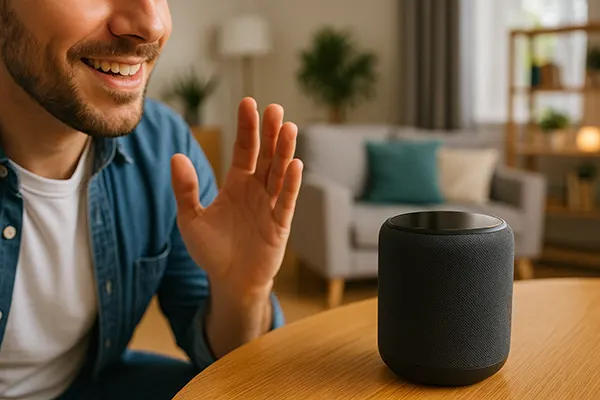Voice SEO 2025: Optimising for Voice Search on Smart Devices

Voice search has evolved from a niche function into a mainstream tool, with millions of people worldwide relying on voice assistants such as Alexa, Google Assistant, and Siri for everyday queries. In 2025, the importance of Voice SEO has reached a point where businesses that fail to adapt risk losing visibility to competitors who tailor their content for spoken interactions. This article explores the key strategies for optimising your content for voice queries, ensuring you meet both user expectations and search engine standards.
Understanding Voice Search in 2025
Voice search technology in 2025 is no longer limited to basic keyword detection. Thanks to advancements in AI and natural language processing (NLP), voice assistants now understand context, conversational phrasing, and even user intent across multiple languages. For brands, this means optimising for how people speak rather than how they type, which involves focusing on long-tail queries and natural sentence structures.
Smart devices have also become more integrated into daily life. From smart TVs and kitchen appliances to wearable tech, voice commands are now a default feature. This integration means that the search environment is increasingly diverse, and the optimisation strategies must cater to different devices and contexts without sacrificing accuracy.
Another significant trend is the shift towards hyper-local search. Users often rely on voice assistants to find immediate answers to location-based questions such as “nearest pharmacy” or “best coffee shop open now.” For businesses, this requires precise and updated local SEO data, including correct business hours, address formatting, and customer reviews.
Key Differences Between Voice and Text Search
While text-based search still dominates certain sectors, voice search differs in several critical ways. Firstly, spoken queries are usually longer and framed as complete questions rather than fragmented keywords. This means that content should be written to directly answer specific queries, preferably in a concise and informative manner that voice assistants can read aloud.
Secondly, voice search users expect instant, clear, and accurate responses. Unlike text searchers who may browse multiple links, voice users are often given only one or two answers. As a result, the competition for the top spot is even fiercer, making structured data and schema markup essential.
Lastly, tone and language style play a role. Voice search results tend to favour conversational and accessible language over overly technical or complex phrasing. This aligns with the way people naturally communicate, which is why aligning your content style with user speech patterns is critical.
Optimising Content for Voice Queries
The foundation of effective Voice SEO is understanding how users phrase their questions. Tools like Google’s “People Also Ask” and conversational keyword research can help identify the most common question formats in your niche. Once identified, these queries should be answered directly within your content, ideally within the first few sentences for maximum impact.
Another effective technique is implementing FAQ sections. FAQs allow you to target specific conversational queries while improving the likelihood that your content will be featured as a voice assistant’s spoken answer. Structuring answers clearly, with one idea per paragraph, increases both readability and voice compatibility.
In 2025, the use of structured data has become a non-negotiable element of voice search optimisation. Schema markup not only helps search engines understand your content but also increases the chances of it being selected for “position zero” — the featured snippet read aloud by voice assistants.
Technical Enhancements for Better Voice SEO
Technical optimisation plays a critical role in voice search success. Fast-loading mobile pages are essential, as most voice searches occur on smartphones or smart devices with limited screen interfaces. Reducing load times through image compression, code minimisation, and caching improves both user experience and ranking potential.
Secure connections (HTTPS) are now a standard ranking factor for voice search results. Voice assistants prioritise secure and trustworthy websites, especially when queries involve sensitive data such as financial transactions or medical advice.
Additionally, implementing AMP (Accelerated Mobile Pages) where relevant can improve response speed for voice queries. While AMP is not suitable for every content type, it remains a valuable option for high-traffic informational pages aimed at voice search users.

Future Trends in Voice SEO
Looking ahead, voice search will increasingly integrate with AI-driven predictive search. Instead of reacting to queries, smart devices will anticipate user needs based on past behaviour, location, and real-time data. This means businesses must focus on delivering content that is not only discoverable but also contextually relevant.
Multilingual optimisation will also become more important. As smart devices gain fluency in additional languages and dialects, businesses targeting global audiences will need to ensure accurate localisation, cultural nuance, and native phrasing in their voice search strategies.
Finally, accessibility will take centre stage. Voice search is a crucial tool for users with visual impairments or mobility challenges. Websites that prioritise accessibility, from screen reader compatibility to clear audio output, will not only expand their audience reach but also align with evolving search engine ranking priorities.
Preparing for the Next Stage of Voice Search
To remain competitive in the evolving landscape of voice search, businesses must adopt a proactive approach. This involves continuously monitoring trends, testing new formats, and refining strategies based on performance data. Voice search optimisation is not a one-off project but an ongoing process that adapts to technological shifts.
Investing in high-quality content that addresses user needs in a direct, conversational tone will remain the cornerstone of success. Combined with technical SEO best practices and structured data, this ensures that your brand remains a preferred choice for voice assistants.
As 2025 progresses, the gap between businesses that embrace Voice SEO and those that ignore it will widen. Those who adapt early will enjoy greater visibility, stronger user engagement, and a more future-proof digital presence.
